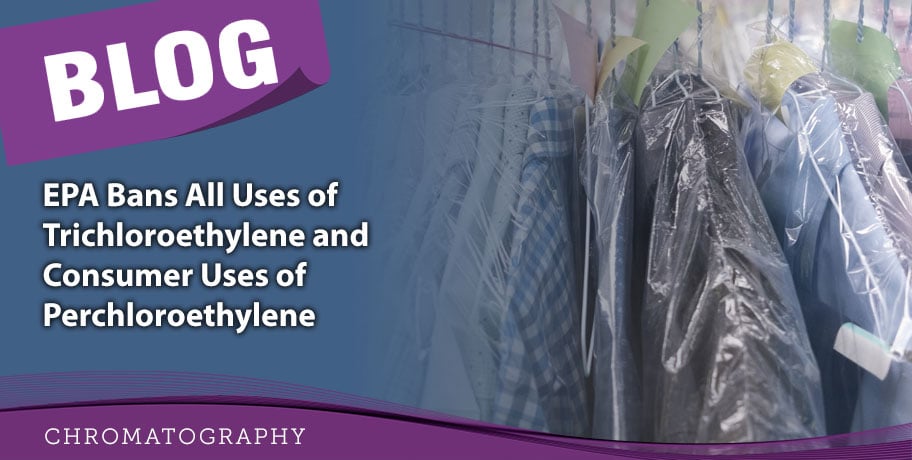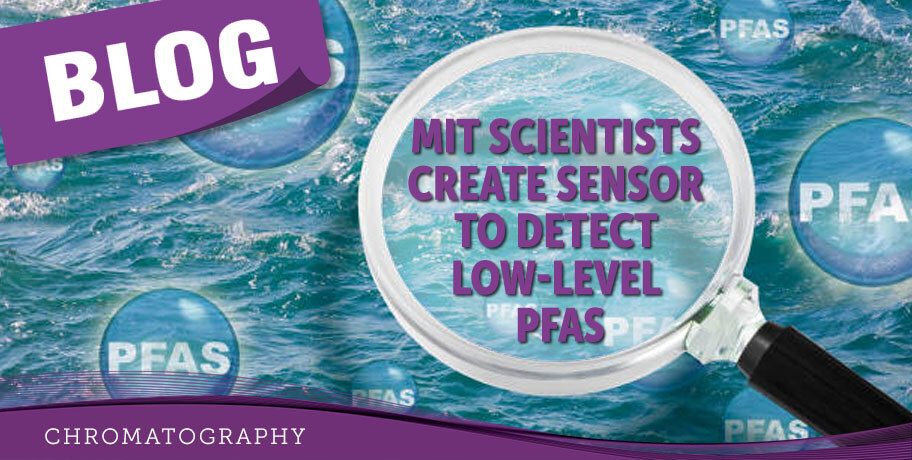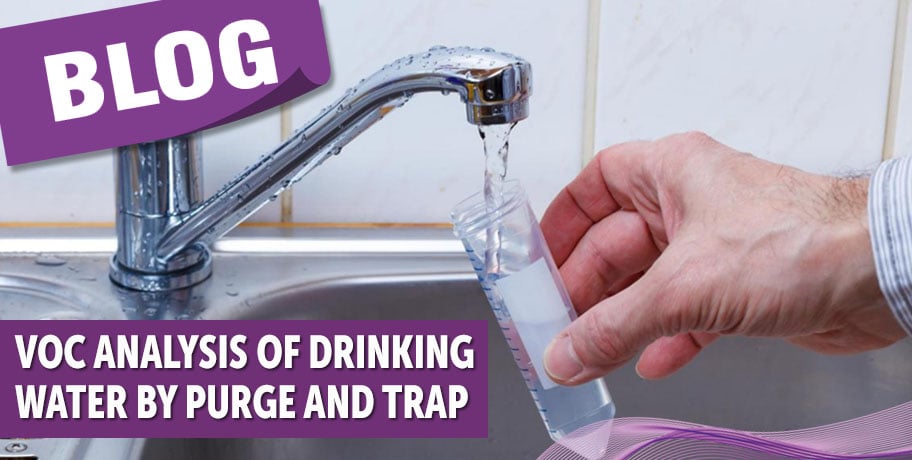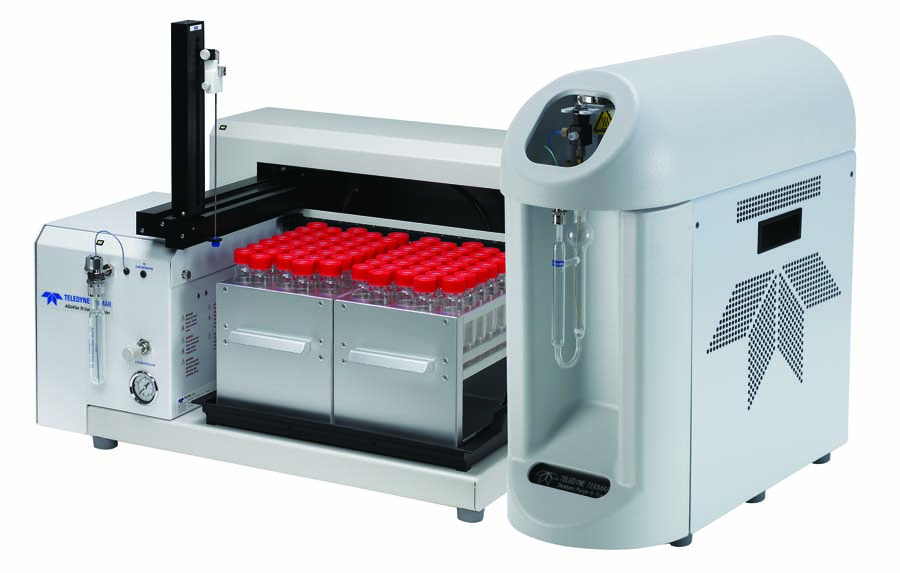In early December 2024, the United States Environmental Protection Agency (EPA) finalized their latest risk management rules for the volatile organic compounds (VOCs) trichloroethylene (TCE) and perchloroethylene
EPA bans all uses of trichloroethylene and consumer uses of perchloroethylene
Posted by Amy Nutter on Tue, Jan 14, 2025 @ 08:51 AM
Tags: VOC, drinking water, EPA, TCE, PCE
MIT scientists create sensor to detect low-level PFAS
Posted by Amy Nutter on Tue, May 21, 2024 @ 03:23 PM
PFAS (per- and polyfluoroalkyl substances) are a group of manufactured chemicals that have been used since the 1940s in industrial and consumer products. It’s a term you have probably heard all over the news in recent years.
Tags: drinking water, PFAS
VOC analysis of drinking water by Purge and Trap
Posted by Amy Nutter on Wed, Apr 03, 2024 @ 12:57 PM
If you work in a drinking water lab, you know there can be specific pain points to drinking water analysis. Here at Teledyne LABS, we design, manufacture, and distribute products that help make this analysis easier for our customers. Five of these pain points are:
Tags: VOC, Volatile Organic Compounds, drinking water, P&T, Purge and Trap
The mayor of Detroit has declared a state of emergency regarding Flint’s water system. In 2014, the city switched from the Detroit water system to the Flint River. Residents were quick to complain about the odor and appearance of the water, and earlier this year, a notice from the city indicated that there has been too much disinfection byproduct in Flint’s water. If used for many years, the byproduct could cause damage to the liver, kidney or central nervous system. The city’s response came as a result a warning from Michigan’s Department of Environmental Quality, which stated that the city’s water was in violation of the Safe Drinking Water Act for maximum contaminant levels for trihalomethanes (TTHM).
Tags: drinking water
EPA Proposes New Water Contaminants Monitoring Rule
Posted by Betsey Seibel on Wed, Jan 13, 2016 @ 03:04 PM
The Environmental Protection Agency is proposing a new rule to the Safe Drinking Water Act that would require public water systems to collect data for up to 30 new types of contaminants in tap water. The rule, which is revised every five years, includes new contaminants that are not subject to EPA standards. The EPA is only allowed by Congress to monitor up to 30 potential contaminants every five years.
The EPA currently monitors 114 contaminants that fall under six categories, including microorganisms, disinfectants, disinfection byproducts, inorganic and organic chemicals and radionuclides. The new rule will provide EPA and others parties with scientifically valid data about the national occurrence of selected contaminants such as cyanotoxins associated with harmful algal blooms. The data, which includes exposure occurrence, levels of exposure and population exposure, is used to help develop regulatory decisions for emerging contaminants.
Tags: drinking water
Estimated 8,000 Gallons of Diesel Spills into Ohio River may impact drinking water
Posted by Betsey Seibel on Fri, Sep 19, 2014 @ 04:19 PM
According to Duke Energy, approximately 5,000 gallons of diesel fuel spilled into the Ohio River on Monday, August 18th. The leak, which started around 11:15 p.m. during a routine transfer of fuel oil, was stopped by 11:30 p.m. The company notified local, state and environmental agencies, as well as the Coast Guard, Northern Kentucky Water District and Greater Cincinnati Water Works.
High Levels of Benzene Found in Chinese Tap Water
Posted by Jason Davis on Thu, Apr 17, 2014 @ 03:50 PM
Benzene and Teledyne Tekmar
Benzene detection has been a frequent topic here at Teledyne Tekmar. In October 2013, we published an Application Note: “Achieving Low-Level Detection of Benzene in Beverages with an Automated Headspace Vial Sampler” and an accompanying webinar “Benzene in Beverages - How Low Can We Go” (to view the webinar, please click the button at the bottom of this blog).
Tags: Purge and Trap Concentrator, drinking water, Stratum, HT3, Benzene, Beverage Analysis, US EPA Method 524.3, P&T
Teledyne Tekmar Instruments Testing Cincinnati Water after West Virginia MCHM Leak
Posted by Jason Davis on Fri, Jan 17, 2014 @ 10:15 AM
When a NBC Nightly News story showed our instruments preparing water samples after the recent 4-methylcyclohexane methanol (MCHM) contamination of West Virginia drinking water, we felt like heroes, and yes, maybe a bit like parents. There was our very own Stratum Purge and Trap Concentrator and AQUATek 70 Vial Autosampler at work in Cincinnati’s Richard Miller Water Treatment Plant.
Tags: Purge and Trap Concentrator, VOC, Teledyne Tekmar, drinking water, AQUATek70, AQUATek100, Stratum
Analytical Chemical Methods Technical Workshop on Hydraulic Fracturing
Posted by Teledyne Tekmar on Sat, Apr 13, 2013 @ 04:51 PM
The US EPA hosted a technical workshop on analytical chemical methods for hydraulic fracturing on February 25th in Research Triangle Park, NC. The goal of these workshops is to gather together stakeholders, technical experts, and EPA representatives to get updates on the progress of the EPA’s testing with regards to hydraulic fracturing. It also serves as a forum to discuss best testing practices and methodologies for this area. Teledyne Tekmar was privileged to participate as a speaker and participant in the round table panel discussions that coincided with the workshop.
Tags: VOC, Teledyne Tekmar, Sample Preparation, Volatile Organic Compounds, drinking water, chromatography, Hydraulic Fracturing, Fracking, Analytical Instrumentation, Concentrator, Autosampler, Analyzer
UCMR3: Plug-and-Play, with some GC/MS tweaks
Posted by Teledyne Tekmar on Sun, May 13, 2012 @ 04:09 PM
The Unregulated Contaminant Monitoring Program (UCMR3) recently announced a new rule that requires public drinking water facilities to collect data on roughly 30 contaminants from January 2013 through December 2015. For the VOC portion of this rule, seven (down from the original nine) were selected for analysis by US EPA Method 524.3, using selective ion monitoring (SIM) to reach MRLs as low as 0.03 µg/L.
Tags: VOC, drinking water, US EPA Method 524.3, Unregulated Contaminant Monitoring Program, UCMR3, selective ion monitoring, SIM







